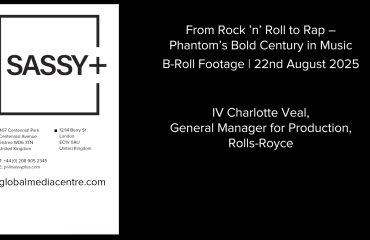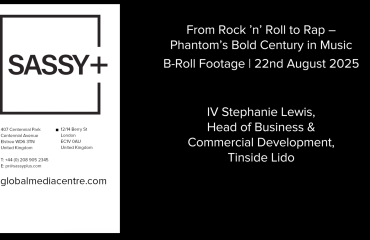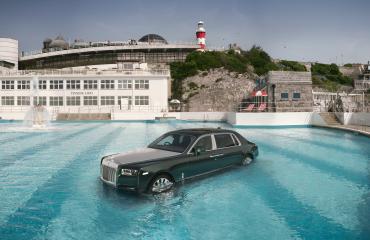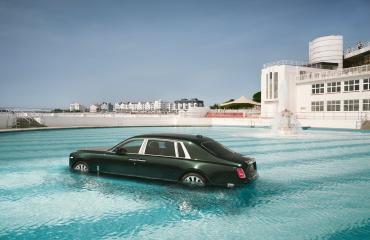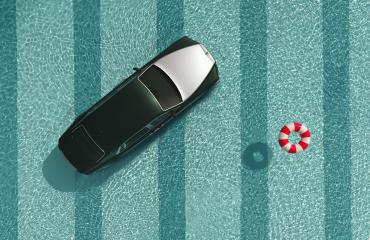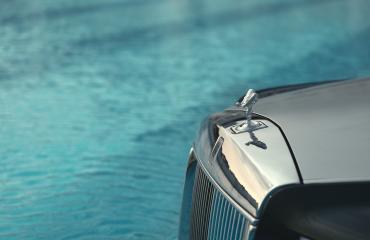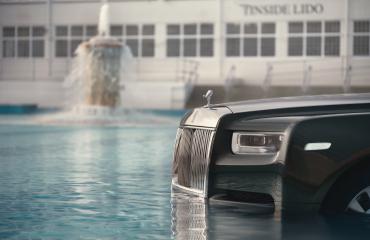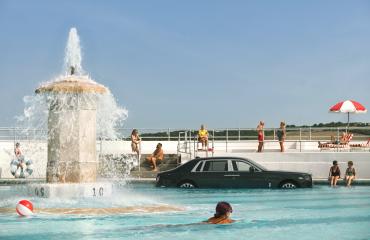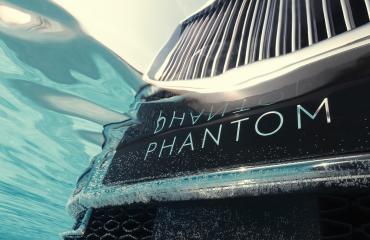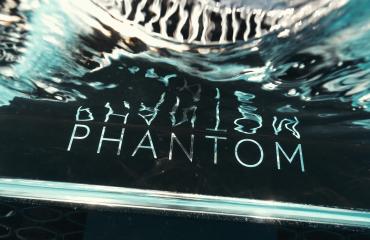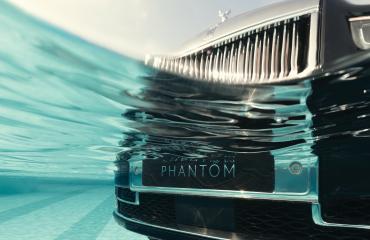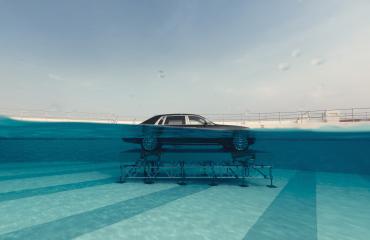Music
Rolls-Royce Marks Phantom's Centenary by Diving into Rock 'n' Roll Legend

Friday 22 August 2025, Goodwood, West Sussex: The connection between Rolls-Royce and the world of popular music is almost as old as the recording industry itself. Long before icons like John Lennon, Elvis Presley and Pharrell Williams wrote themselves into Phantom’s story, artists including Duke Ellington, Fred Astaire, Count Basie, Ravi Shankar, Edith Piaf and Sam Cooke all travelled by Rolls-Royce, recognising the brand as the definitive symbol of success and artistry. Personalities for whom the term ‘music mogul’ was created, including Brian Epstein, Berry Gordy and Ahmet Ertegun, were also among the marque’s most notable owners. Across genres, geographies and generations, Rolls-Royce remains the ultimate reward for creative brilliance and a canvas for personal expression.
Of all models, Phantom – the pinnacle of the marque - is the Rolls-Royce most closely associated with the world of music. Over eight generations and 100 years – a centenary the nameplate celebrates in 2025 – this extraordinary motor car has been consistently chosen by some of the most creative and influential figures in musical history. Phantom’s appeal to these individuals endures; it retains its status as the world’s pre-eminent luxury product, comprised of the very best in engineering excellence, fine materials and exquisite, highly skilled craftsmanship. It also offers its owner the freedom to define their identity – a quality that has helped many Phantoms owned by musical luminaries achieve legendary status in their own right.
MARLENE DIETRICH: FALLING IN LOVE AGAIN
Most actors travel to Hollywood in search of stardom. Marlene Dietrich arrived already part of the constellation. Fresh from her breakout role in The Blue Angel, and having introduced the world to what would become her signature song, Falling in Love Again, she travelled to California in 1930 to begin filming Morocco. Her welcome was as dramatic as her screen presence: at Paramount Studios, she was greeted not only with flowers, but with the gift of a green Rolls-Royce Phantom I. Morocco earned Dietrich an Academy Award nomination – and her Phantom also took its share of the spotlight, appearing in the film’s closing scenes and publicity images.
ELVIS PRESLEY: ALL SHOOK UP
In 1956, a self-titled album by a promising young singer named Elvis Presley became the first rock’n’roll album to top the Billboard chart, where it remained for 10 weeks. In 1963, at the height of his fame, ‘The King’ bought a Midnight Blue Phantom V with a host of Bespoke features. In what may have been an early version of in-car karaoke, the features included a microphone, a writing pad in the rear armrest – ready for flashes of inspiration – along with a mirror and clothes brush to ensure Elvis was always ready to make an entrance. In a charming domestic detail, the original mirror-polished paint famously attracted the attention of Elvis’s mother’s chickens, which would peck at their reflection in the coachwork. The motor car was refinished in a lighter Silver Blue that did not show the chips.
JOHN LENNON: LOVE ME DO
In December 1964, John Lennon rewarded himself for The Beatles’ A Hard Day’s Night by commissioning a Phantom V. The motor car was entirely black, including the windows, bumpers and hub caps; it also boasted a cocktail cabinet and a television, as well as a refrigerator in the boot. However, like Elvis’s Phantom V, Lennon’s would also undergo a complete transformation. In May 1967, just before Sgt Pepper’s Lonely Hearts Club Band was released, the motor car was resprayed yellow, then hand-painted with swirls of red, orange, green and blue, with floral side panels and Lennon’s star sign, Libra, completing the motor car’s new persona.
For the younger generation, Lennon’s Phantom perfectly captured the mood of the carefree ‘Summer of Love’ that year. To their elders, it was an outrage, memorably summed up by a woman who, on seeing the Phantom driving down London’s Piccadilly, shouted, “How dare you do that to a Rolls-Royce!” before swatting at the paintwork with her umbrella. When the motor car sold in 1985, it reached $2,299,000, almost 10 times the reserve price. It was both the most expensive piece of rock ‘n’ roll memorabilia at the time, and the highest price ever achieved for a motor car sold by auction.
This Phantom is arguably the most famous Rolls-Royce connected with Lennon, but he owned another. Lennon purchased a white Rolls-Royce Phantom V in 1968 to coincide with the launch of the White Album and to mark a new phase of his life with Yoko Ono. This was characterised by his wearing white clothes, decorating the interior and exterior of his Berkshire home in bright white, and pursuing a distinctly minimalist aesthetic.
Originally commissioned in a two-tone black-over-green by Wing Commander Paddy Barthropp, a wartime Spitfire pilot turned chauffeur, Lennon individualised this motor car in line with his personal style at the time. He paid £12,000 – equivalent to the price of a sizeable house at the time – to have the motor car transformed to white inside and out, and had it fitted with a sunroof, Philips turntable, 8-track player, telephone and television. It would later appear in the Beatles film Let It Be, as well as Performance, which starred Rolling Stones frontman Mick Jagger. In September 1969, Lennon sold the car to Allen Klein, founder of ABKCO Records and the Beatles’ manager at the time, for a reported $50,000.
LIBERACE: I’LL BE SEEING YOU
Another musical iconoclast was Władziu Valentino Liberace. Flamboyant and multi-talented, Liberace was the world’s highest-paid entertainer in the 1950s and ‘60s thanks to his TV shows and long residencies in Las Vegas. Among the extravagances that earned him the soubriquet ‘Mr Showmanship’ was a 1961 Phantom V covered in tiny mirror pieces that he would use to drive on stage during his long-running residency at the Las Vegas Hilton. The motor car appeared in the award-winning Liberace biopic, Behind the Candelabra, in which Michael Douglas recreated its short but famous journey.
SIR ELTON JOHN: A RIDE FOR THE ROCKETMAN
Liberace’s playing style influenced a generation of performers, including a budding pianist named Reginald Dwight, today known as Sir Elton John, who would later take inspiration from his hero by owning several Phantoms. In 1973, en route to a concert in Manchester in his white Phantom VI, Sir Elton saw a newer example in a showroom window. He instructed his chauffeur to stop, bought the car, and used it to complete his journey to the venue.
Later, he would update the Phantom with black paintwork, a black leather interior, tinted windows, a television, video player, and even a fax machine. The most significant addition, however, was a bespoke audio system that was so powerful that the back windscreen had to be strengthened to prevent it from shattering when the volume was turned up.
Sir Elton also owned a Phantom V, for which he commissioned a striking pink-and-white exterior paint finish and matching interior. Following a tour of the USSR, where he was paid in coal, rather than cash, Sir Elton was unable to pay his musicians. Instead, he gave the Phantom to his percussionist, Ray Cooper, in lieu of a cash fee. Cooper later used the motor car to pick up a young Damon Albarn from school, who went on to find stardom of his own with Blur. History came full circle in 2020, when Albarn and his virtual band, Gorillaz, recorded The Pink Phantom, with Sir Elton appearing as a guest vocalist.
KEITH MOON: WON’T GET FOOLED AGAIN?
Legend has it that, while celebrating his 21st birthday, the gifted but fatefully self-destructive drummer of The Who, Keith Moon, plunged his Rolls-Royce into the swimming pool at the Holiday Inn in Flint, Michigan, creating one of rock ‘n’ roll’s most enduring legends.
Accounts of what really happened that night differ wildly. In an interview with Rolling Stone in 1972, Moon stated the motor car was a Lincoln Continental belonging to another hotel guest; he said he let off the handbrake and rolled the car into the pool. Other party guests maintain that no motor car ended up in the pool at all. Whether a car ended up in the pool or not, the myth is so potent that it has become the definitive image of rock ‘n’ roll indulgence and as such, the car in the pool could only be a Rolls-Royce.
To mark Phantom’s centenary and the motor car’s place in rock ‘n’ roll mythology, Rolls-Royce brought legend to life by submerging a Phantom Extended body shell — a retired prototype destined for recycling — in a swimming pool. The chosen location was Tinside Lido in Plymouth, England, a celebrated Art Deco landmark next to the English Channel. Linked to John Lennon, one of Phantom’s most famous clients, the Lido served as a backdrop to a photograph of The Beatles taken on 12 September 1967, during a visit whilst filming for The Magical Mystery Tour. That same year, Lennon unveiled his yellow, hand-painted Phantom V, further cementing the nameplate’s place in music legend.
HIP-HOP STAR
Since moving to Goodwood, where production began in 2003, Rolls-Royce has only strengthened its ties with contemporary music. By 2016, it had become the most name-checked brand in song lyrics, driven in part by the meteoric rise of hip-hop. The genre was a cultural powerhouse by the 1990s, and a household staple at the turn of the century, coinciding with Rolls-Royce’s Goodwood renaissance and the launch of Phantom VII in 2003.
A year later, Pharrell Williams and Calvin ‘Snoop Dogg’ Broadus Jr, would famously feature a Phantom VII in the 2004 music video for Drop It Like It’s Hot, which would top the US Billboard Hot 100 for three weeks and commence Phantom’s lasting connection with the genre’s most influential artists. Curtis ‘50 Cent’ Jackson appeared in the TV series Entourage in a Phantom VII Drophead Coupé – a scene that would go on to become a widely shared meme; Tha Carter II by Dwayne ‘Lil Wayne’ Carter is one of many albums to feature Phantom on its cover. The genre has also played a key role in popularising one of the marque’s most distinctive features: Starlight Headliner. The phrase ‘stars in the roof’ – and its variations – recurs in rap lyrics and has become a suitably poetic shorthand for Rolls-Royce ownership.
ENCORE: PHANTOM’S LASTING LEGACY
Phantom has maintained a constant, evolving presence in the story of modern music. In each era, it has offered artists and innovators a means of self-expression, aspiration and identity. As Phantom enters its second century, it continues to symbolise success, individuality, and the power of human imagination.

